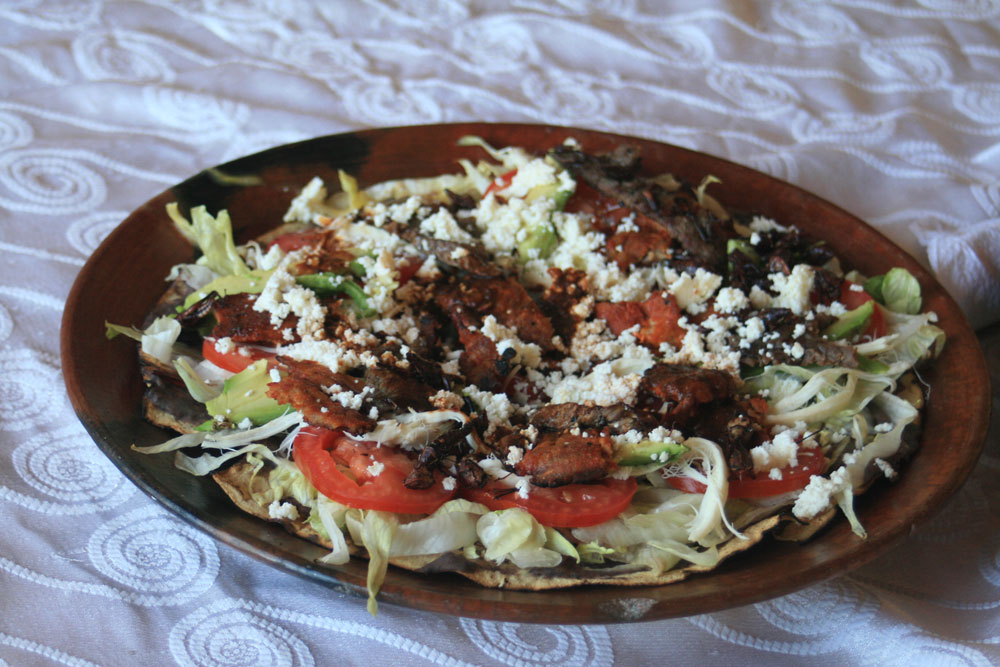Oaxaca is a foodie tourist destination known for its reputation as “the land of the seven moles.” The valley in southern Mexico draws praise for its fine spiced chocolate, and curiosity for the freaky chapulines grasshoppers, but it is the tlayuda (pronounced tla-YOU-dah) that stands out as the iconic Oaxacan street food.
A popular choice at El Escapulario, a downtown Oaxaca City restaurant serving traditional Oaxacan food since 2002, the tlayuda is sometimes compared to a pizza, but is actually more like a giant nacho. The tortilla is made by hand, first kneading the masa dough into large balls, then pressing them into thin, round sheets before baking them on a clay comal over a wood fire.
“The most traditional tlayudas are simple,” owner Esther Alanso Garcia explains in Spanish, after we finished our meal. The dish, which originated in Oaxaca, was originally just the crispy baked tortilla with a smear of asiento – a flavorful unrefined pork fat – and a thick black bean paste. These tlayudas were something you could eat by hand. [pagebreak]
While it’s often still served folded in half as a street food, the tlayuda is decidedly not a taco. You’re definitely going to need a plate. Most tlayudas now come with a selection of vegetables – either cabbage or lettuce, tomatoes, and avocados – plus cheese and often some kind of grilled meat. Salsa is a staple, of course, usually served on the side.
At El Escapulario, the tlayudas are presented open-faced on large clay platters, so you can save all the delicious crumbs for later. Esther’s tlayudas are not the simple meals of days past, but they are a testament to why this food is still a Oaxacan tradition. The especial, pictured, could have been called The Works.
All the basics are there: tortilla, lard, beans, lettuce, tomato, and avocado. Two kinds of Oaxacan cheese top the veggies, both the stringy quesillo and the crumbly queso fresco. Thinly sliced beef tasajo, spicy pork cecina and crumbly chorizo sausage warm up the plate, fresh from the grill. A topping of those crunchy chapulines add an extra layer of complexity, and it is all topped off with a thick, red grasshopper salsa.
“The tlayuda is a completely local tradition. All of the ingredients, the techniques, come from Oaxaca,” Esther says. Whether you are out for a fine meal or just looking for some midnight munchies after drinking a bit too much mezcal, you can’t go wrong with this crunchy mix of spices, savory meats and filling fresh veggies.


![Making Mealtime Matter with La Familia: Easy Sofrito [Video]](https://thelatinkitchen.com/wp-content/uploads/2015/10/sofrito-shutterstock__0-500x383.jpg)
![Easy Latin Smoothies: Goji Berry Smoothie [Video]](https://thelatinkitchen.com/wp-content/uploads/2015/12/goji_berry-shutterstock_-500x383.jpg)
















![Fun and Fast Recipes: Fiesta Cabbage Salad [Video]](https://thelatinkitchen.com/wp-content/uploads/2015/11/fiesta_cabbage_slaw-shutterstock_-500x383.jpg)









